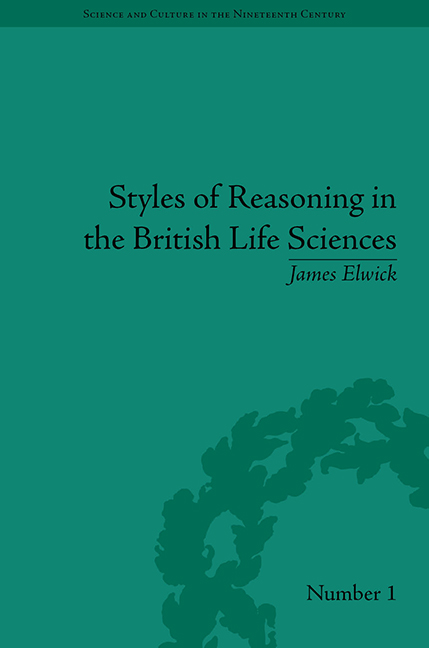Conclusion
Summary
By 1858, one year before the publication of Darwin's Origin of Species, the world of British life research had already considerably changed from that of the early 1840s. A young London life researcher in the 1840s was taught to some extent to see an organism as an aggregate of elements – bones, nervous ganglia, segments or physiological compartments. Higher organisms' elements were more integrated than lower organisms' elements. In turn we can see nine explanatory principles emerging from these points and reinforcing each other.
1. vivisection. Certain living organisms survived bilateral sectioning while others died immediately, because those organisms surviving such work were aggregations of simpler quasi-independent elements that did not require each other to survive. Each element thus acted as a separate compartment. A lower organism's survivability could even be explained by seeing it as an aggregate of quasi-individuals.
2. homologizing. Homologies between different individuals (general homology) allowed researchers like Owen to imaginatively liken them to homologies within individuals (serial homology). Analysis:synthesis gave the ability for a person to jump levels of organization in this way, because it was possible to depict the relationship of part to whole: whether an entity was a part or a whole depended only on one's perspective.
3. the physiological division of labour. Point 1 noted that animals able to survive extensive vivisection were simpler creatures with less specialized systems which repeated in each element. Conversely those animals dying quickly during vivisection were more complex, with more specialized and often localized physiological systems that could produce more life. Although they were more vulnerable, this specialization meant that these animals could produce more life energy.
4. a hierarchy of general physiological systems. These higher animals also possessed several levels of physiological systems. Their vivisection revealed that some of their physiological systems depended on others, making these supporting systems ‘foundational’ ones. While the removal or destruction of certain body parts (such as the medulla oblongata) immediately caused the death of the entire animal, the removal or destruction of other parts caused only certain functions to be lost.
- Type
- Chapter
- Information
- Styles of Reasoning in the British Life SciencesShared Assumptions, 1820–58, pp. 161 - 168Publisher: Pickering & ChattoFirst published in: 2014



